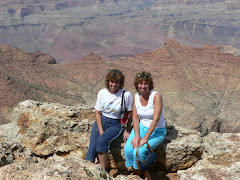






Name: Kyrgyz Republic, Kyrgyzstan (conventional short), former: Kirghiz Soviet Socialist Republic. Geographic coordinates: 41 00 N, 75 00 EArea: 199,900 sq km (77,182 sq miles).Land boundaries: Uzbekistan 1,099 km, Kazakstan 1,051 km, Tajikistan 870 km, China 858 km.Climate: dry continental to polar in high Tien Shan; subtropical in southwest (Fergana Valley); temperate in northern foothill zone.Data code: KG Government type: republic National capital: Bishkek Administrative divisions: 6 regions and 1 city (shaar). Bishkek, Chuy Region (Chuy Oblasty), Jalal-Abad Region (Jalal-Abad Oblasty), Naryn Region (Naryn Oblasty), Osh Region (Osh Oblasty), Talas Region (Talas Oblasty), Issyk-Kul Region (Issyk-Kul Oblasty)Independence: 31 August 1991 (from Soviet Union) National holiday: National Day, 2 December; Independence Day, 31 August (1991)Constitution: adopted 5 May 1993Population: 5,067,000 (UN estimate 2002). Ethnic groups: Kirghiz 52.4%, Russian 18%, Uzbek 12.9%, Ukrainian 2.5%, German 2.4%, other 11.8% Religions: Muslim 75%, Russian Orthodox 20%, other 5% Languages: Kirghiz (Kyrgyz) - official language, Russian - official language (in March 1996, the Kyrgyzstan legislature amended the constitution to make Russian an official language, along with Kirghiz, in territories and work places where Russian-speaking citizens predominate)Time: GMT + 5 (GMT + 6 from second Sunday in April to Saturday before last Sunday in September). Electricity: 220 volts AC, 50Hz. Round two-pin continental plugs are standard.
The Kyrgyz, a Turkic-speaking people, constitute a slim majority of the multiethnic population of Kyrgyzstan. The constitution enshrines Kyrgyz as the country's state language, although Russian continues to be used widely. Kyrgyzstan became part of the Russian Empire in the late 1800s. In 1924 it was incorporated into the Union of Soviet Socialist Republics (USSR) as an autonomous region, and in 1936 its status was upgraded and it became one of the 15 constituent republics of the USSR, officially called the Kirgiz Soviet Socialist Republic (SSR). The republic was also commonly known as Kirgizia under Soviet rule, and Russians continue to call it that today. Kyrgyzstan became independent from the USSR in 1991. In 1993 the republic ratified its first post-Soviet constitution.
The total area of Kyrgyzstan is 198,500 sq km (76,640 sq mi). The country is almost completely mountainous. More than half of Kyrgyzstan lies at an elevation higher than 2,500 m (8,200 ft), and only about one-eighth of the country lies lower than 1,500 m (about 4,900 ft). Glaciers and permanent snowfields cover more than 3 percent of Kyrgyzstan's total land area. An underlying seismic belt causes frequent earthquakes.
Kyrgyzstan is located at the juncture of two great Central Asian mountain systems (the Tian-Shan and the Pamirs). These two systems are geologically separated from each other in southern Kyrgyzstan, between the Alai Mountains of the Tian-Shan and the Trans-Alai Range (Qatorkuhi Pasi Oloy) of the Pamirs. The Trans-Alai Range, which is the northernmost part of the Pamirs, forms part of Kyrgyzstan's southern border with Tajikistan. The main ridge of the Tian-Shan extends along Kyrgyzstan's eastern border with China, on a northeastern axis. Victory Peak (known as Pik Pobedy in Russian and Jenish Chokosu in Kyrgyz) is the highest peak in the Tian-Shan system at an elevation of 7,439 m (24,406 ft). Located on the Kyrgyz-China border in northeastern Kyrgyzstan, Victory Peak is also the highest point in Kyrgyzstan and the second highest peak in the former USSR. A series of mountain chains that are part of the Tian-Shan system, including the Alatau ranges, spur off into Kyrgyzstan. Most of these ranges run generally east to west, but the Fergana Mountains in the central portion of the country run southeast to northwest. The Fergana Valley in the west and the Chu Valley in the north are among the few significant lowland areas in Kyrgyzstan.
The Naryn River, Kyrgyzstan's largest river, originates in the mountains in the northeast and flows westward through the middle of the country. The Naryn then enters the Fergana Valley and crosses into Uzbekistan, where it joins with another river to form the Syr Darya, one of Central Asia's principal rivers. The Chu River, in northern Kyrgyzstan, flows northward into southern Kazakhstan. Yssyk-Kul, the largest lake in Kyrgyzstan and one of the largest mountain lakes in the world, is located at an altitude of 1,607 m (5,273 ft) above sea level in the northeastern portion of the country.
Forests occupy 4 percent of the country's land area. Coniferous trees such as the Tian-Shan white spruce grow along lower valleys and on north-facing mountain slopes. Many rare animal species inhabit the woodlands, including the Tian-Shan bear, the red wolf, and the snow leopard, which are protected by government decree. Other animals in Kyrgyzstan include deer, mountain goats, and mountain sheep. Kyrgyzstan's mountain lakes are an annual refuge for thousands of migrating birds, including the mountain goose and other rare species.
Kyrgyzstan's natural resources include significant deposits of gold and other minerals. Also present are deposits of coal, uranium, mercury, antimony, nepheline, bismuth, lead, and zinc. Exploitable but small reserves of oil and natural gas also exist. The country's fast-flowing rivers provide hydroelectric power. Only 7 percent of the total land area is cultivated.
The country's climate varies by region. The climate is subtropical in the Fergana Valley and temperate in the northern foothill zone. The lower mountain slopes have a dry continental climate, as they receive desert-warmed winds from Kazakhstan and Uzbekistan, whereas the highest mountain elevations have a polar climate. In the valleys, the average daily temperature in July is 28° C (82° F). In January daily averages are as low as -14° C (7° F). Conditions are much colder at high elevations, where in July the average daily temperature is 5° C (41° F) and in January, -28° C (-18° F). Precipitation is between 100 and 500 mm (4 and 20 in) in the valleys and from 180 to 1,000 mm (7 to 40 in) in the mountains.
Commemorating the great Kyrgyz of the past The village of Kyzyl-Bairak has opened a monument in memory of Atake-baatyr and his great-grandson, Shabdan-baatyr, who did much to unite separate Kyrgyz tribes.
The memorial has been build trough donations gathered all over the country. President Akayev's children- daughter Bermet and son Aidar - are the initiators of the monument's construction.
Atake-baatyr stands on a pedestal with a snow leopard at his feet and a scroll of paper in his hands. The statue faces the sun rising from behind the mountains. In Russia in the mid-18th century Atake-baatyr was called the prince of Kyrgyz tribes. This year marks his 265th birthday.
The road to the memorial, which is going up, is covered with pink sand and has firs on both sides. A museum, left of the monument, keeps unique photographs and documents about the history of the Kyrgyz people. Some of these pictures and documentations have never been exhibited before.
The Kyrgyz, a Turkic-speaking people, constitute a slim majority of the multiethnic population of Kyrgyzstan. The constitution enshrines Kyrgyz as the country's state language, although Russian continues to be used widely. Kyrgyzstan became part of the Russian Empire in the late 1800s. In 1924 it was incorporated into the Union of Soviet Socialist Republics (USSR) as an autonomous region, and in 1936 its status was upgraded and it became one of the 15 constituent republics of the USSR, officially called the Kirgiz Soviet Socialist Republic (SSR). The republic was also commonly known as Kirgizia under Soviet rule, and Russians continue to call it that today. Kyrgyzstan became independent from the USSR in 1991. In 1993 the republic ratified its first post-Soviet constitution.
The total area of Kyrgyzstan is 198,500 sq km (76,640 sq mi). The country is almost completely mountainous. More than half of Kyrgyzstan lies at an elevation higher than 2,500 m (8,200 ft), and only about one-eighth of the country lies lower than 1,500 m (about 4,900 ft). Glaciers and permanent snowfields cover more than 3 percent of Kyrgyzstan's total land area. An underlying seismic belt causes frequent earthquakes.
Kyrgyzstan is located at the juncture of two great Central Asian mountain systems (the Tian-Shan and the Pamirs). These two systems are geologically separated from each other in southern Kyrgyzstan, between the Alai Mountains of the Tian-Shan and the Trans-Alai Range (Qatorkuhi Pasi Oloy) of the Pamirs. The Trans-Alai Range, which is the northernmost part of the Pamirs, forms part of Kyrgyzstan's southern border with Tajikistan. The main ridge of the Tian-Shan extends along Kyrgyzstan's eastern border with China, on a northeastern axis. Victory Peak (known as Pik Pobedy in Russian and Jenish Chokosu in Kyrgyz) is the highest peak in the Tian-Shan system at an elevation of 7,439 m (24,406 ft). Located on the Kyrgyz-China border in northeastern Kyrgyzstan, Victory Peak is also the highest point in Kyrgyzstan and the second highest peak in the former USSR. A series of mountain chains that are part of the Tian-Shan system, including the Alatau ranges, spur off into Kyrgyzstan. Most of these ranges run generally east to west, but the Fergana Mountains in the central portion of the country run southeast to northwest. The Fergana Valley in the west and the Chu Valley in the north are among the few significant lowland areas in Kyrgyzstan.
The Naryn River, Kyrgyzstan's largest river, originates in the mountains in the northeast and flows westward through the middle of the country. The Naryn then enters the Fergana Valley and crosses into Uzbekistan, where it joins with another river to form the Syr Darya, one of Central Asia's principal rivers. The Chu River, in northern Kyrgyzstan, flows northward into southern Kazakhstan. Yssyk-Kul, the largest lake in Kyrgyzstan and one of the largest mountain lakes in the world, is located at an altitude of 1,607 m (5,273 ft) above sea level in the northeastern portion of the country.
Forests occupy 4 percent of the country's land area. Coniferous trees such as the Tian-Shan white spruce grow along lower valleys and on north-facing mountain slopes. Many rare animal species inhabit the woodlands, including the Tian-Shan bear, the red wolf, and the snow leopard, which are protected by government decree. Other animals in Kyrgyzstan include deer, mountain goats, and mountain sheep. Kyrgyzstan's mountain lakes are an annual refuge for thousands of migrating birds, including the mountain goose and other rare species.
Kyrgyzstan's natural resources include significant deposits of gold and other minerals. Also present are deposits of coal, uranium, mercury, antimony, nepheline, bismuth, lead, and zinc. Exploitable but small reserves of oil and natural gas also exist. The country's fast-flowing rivers provide hydroelectric power. Only 7 percent of the total land area is cultivated.
The country's climate varies by region. The climate is subtropical in the Fergana Valley and temperate in the northern foothill zone. The lower mountain slopes have a dry continental climate, as they receive desert-warmed winds from Kazakhstan and Uzbekistan, whereas the highest mountain elevations have a polar climate. In the valleys, the average daily temperature in July is 28° C (82° F). In January daily averages are as low as -14° C (7° F). Conditions are much colder at high elevations, where in July the average daily temperature is 5° C (41° F) and in January, -28° C (-18° F). Precipitation is between 100 and 500 mm (4 and 20 in) in the valleys and from 180 to 1,000 mm (7 to 40 in) in the mountains.
Commemorating the great Kyrgyz of the past The village of Kyzyl-Bairak has opened a monument in memory of Atake-baatyr and his great-grandson, Shabdan-baatyr, who did much to unite separate Kyrgyz tribes.
The memorial has been build trough donations gathered all over the country. President Akayev's children- daughter Bermet and son Aidar - are the initiators of the monument's construction.
Atake-baatyr stands on a pedestal with a snow leopard at his feet and a scroll of paper in his hands. The statue faces the sun rising from behind the mountains. In Russia in the mid-18th century Atake-baatyr was called the prince of Kyrgyz tribes. This year marks his 265th birthday.
The road to the memorial, which is going up, is covered with pink sand and has firs on both sides. A museum, left of the monument, keeps unique photographs and documents about the history of the Kyrgyz people. Some of these pictures and documentations have never been exhibited before.
























No comments:
Post a Comment